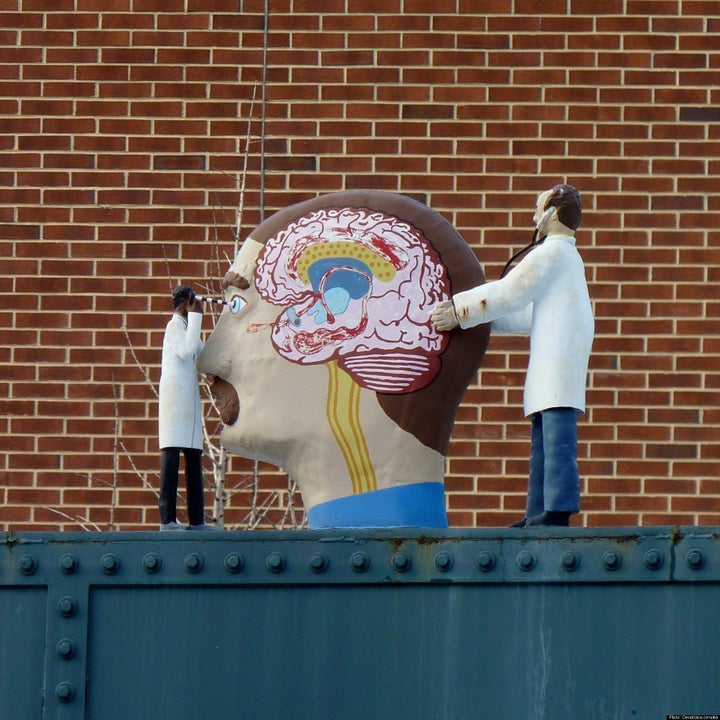
UPDATE: One of the authors of the "thinking cap" study wrote in to The Huffington Post to clarify the researchers' findings and results.
Richard Chi writes,
In our PLoS study, we took a standard problem of insight, a match stick arithmetic visual problem, and we trained people into solving the problem with one kind of strategy. Subsequently, we asked people to solve a much harder problem that required a novel twist, a completely different strategy for solving the problem. Most people had great difficulties in thinking outside the box! Only 20% of people without stimulation can solved this new problem, whereas 60% can with brain stimulation.
He notes furthermore, "The cap is NOT equipped with 'magnetic pulses'. Instead it is a simple device called transcranial direct current stimulation (tDCS), which consists of two sponge electrodes and can be powered by a 9 volt battery. In layman's terms, the technique can excite or inhibit certain part of the brain depending on current polarity. The effects of stimulation last about an hour, which is exactly what we want - a temporary window where people are less influenced by their preconceptions."
More information is available here and here. See the official press release from the study here. --Sydney University researchers have developed a "thinking cap" that allegedly helps the wearer the unlock latent creativity.
The cap is equipped with electrodes that deliver a series of low-level electric pulses to the left side of the brain. After several minutes of such stimulation, some test subjects were found to analyze test problems differently than they had before the experiment.
Leading the research was Professor Allan Snyder, who has been working on the project for eight years. Snyder told News.com.au that his research was inspired by brain trauma patients, especially those struck by lightening. "In many of these cases, brain trauma victims experience a suppression of the left temporal lobe - which, in layman's terms - frees up the right side of the brain to be more creative," News.com.au reports.
Snyder told News.au.com that his "creativity cap" is not meant to boost intelligence. "Its advantage is in seeing the world anew. Taking ideas from different places and developing them into a new synthesis," he said.
Snyder was assisted in his research by Chi. Their findings were published on February 2 PLoS ONE peer review journal.